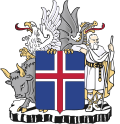| | |||||||||||||||||||||||||||||||||||||||||||||||||||||||||||||||
| |||||||||||||||||||||||||||||||||||||||||||||||||||||||||||||||
All 26 seats in the Lower House and 8 of 14 seats in the Upper House of Althing 14 and 8 seats needed for a majority | |||||||||||||||||||||||||||||||||||||||||||||||||||||||||||||||
| Turnout | 45.38% | ||||||||||||||||||||||||||||||||||||||||||||||||||||||||||||||
|---|---|---|---|---|---|---|---|---|---|---|---|---|---|---|---|---|---|---|---|---|---|---|---|---|---|---|---|---|---|---|---|---|---|---|---|---|---|---|---|---|---|---|---|---|---|---|---|---|---|---|---|---|---|---|---|---|---|---|---|---|---|---|---|
This lists parties that won seats. See the complete results below.
| |||||||||||||||||||||||||||||||||||||||||||||||||||||||||||||||
 |
|---|
Parliamentary elections were held in Iceland on 15 November 1919. [1] Voters elected all 26 seats in the Lower House of the Althing and eight of the fourteen seats in Upper House. [2] The Home Rule Party remained the largest party in the Lower House, winning 10 of the 26 seats.
